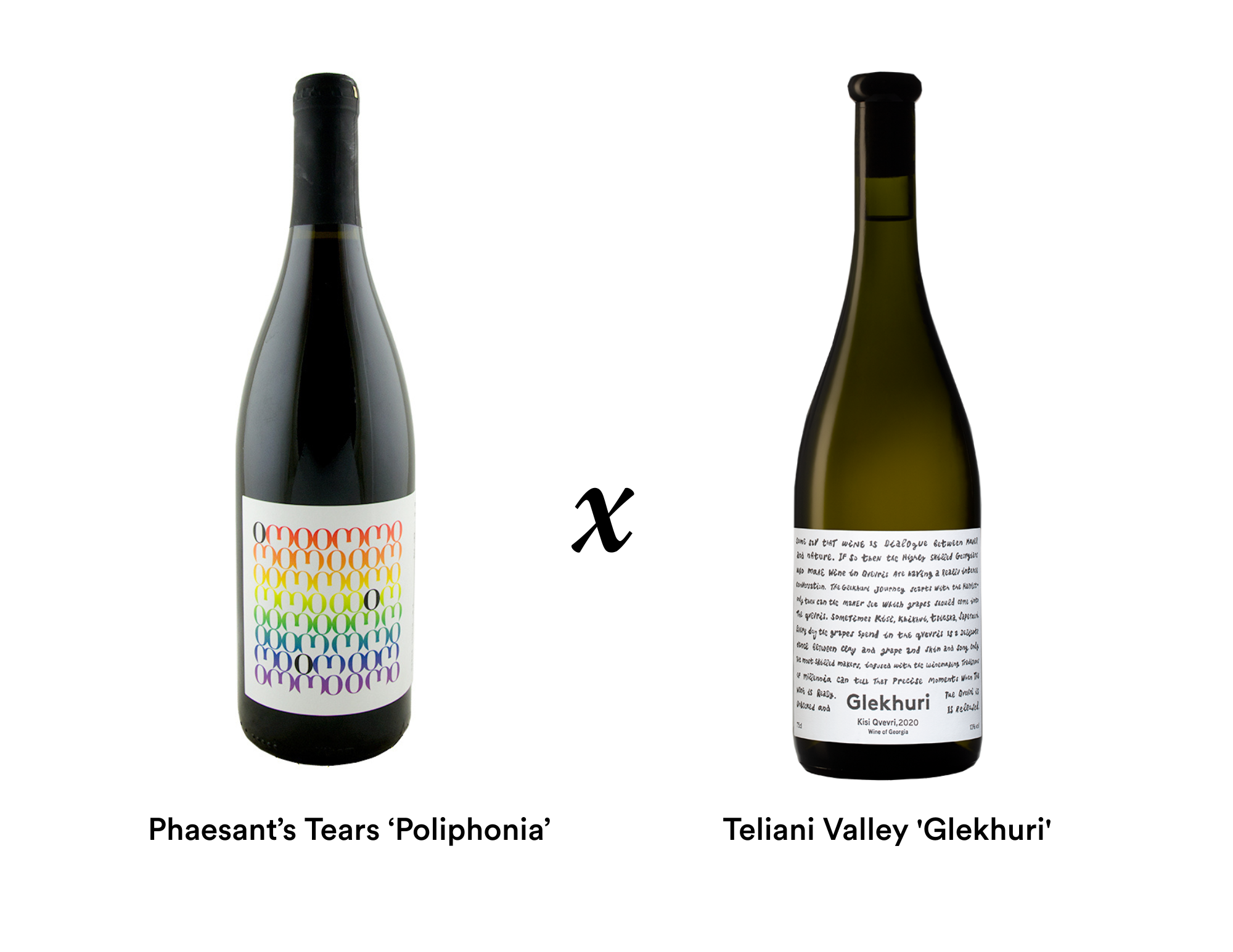June Wine Club: The Republic of Georgia
It is June and time to celebrate another Ancient World Wine Country: The Republic of Georgia.
Georgian wine is ancient Ancient World Wine; it currently retains the title for earliest wine production, ca 6000 BCE. The first Georgian grape I ever drank was Rkatsitelli, grown and vinified in New York by Dr. K. Frank winery. It was enchanting. The flavors were unlike any grape I could think to compare it. I was in love.
This is how I described that 2008 Rkatsitelli (tasted in 2012):
“The nose is aromatic with tangerines, bread, and white flowers. There is soft pear, nectarine, and fresh white pepper. There are fresh herbs and minerals, and that wonderful quality of “bracing acidity” that is so common to some of the best Rieslings.
The winemaker asserts that the wine has some edamame notes, and who are we to argue? (…)
But, beyond all of its fruit, herb, spice, and mineral, one of this wine’s finest and most intriguing quality’s is its “presence”. It tastes of earth, and life, and history.”
I now think of “edamame” as an integral flavor to Rkatsitelli – made in international style (not in qvevri).
I quickly sought out Georgan wines, and the very first of those I ever drank was a Chateau Mukhrani Rkatsitelli that we carried at Jet back in 2012 and 13. I still adore Mukhrani wines, and am always on the lookout for the non-qvevri rkats.
As a result of those experiences, I dug deeper into Georgian wines and their history. We had many wine-tastings at Jet where we delved into the archaeological evidence for early wine-production. At that time, Iran and Armenia were battling for “earliest” based on excavated evidence. Soon, though, Georgia gained the title based on an archaeological project at which a friend of mine, Stephen Batiuk, was a lead. Georgians were incredibly proud of these finds and were anxious to share their new-old wine-making traditions with the world. In 2018, I had the distinct pleasure to travel to Georgia on a wine-education trip with the convivial and amazingly-knowledgeable Lisa Granik, MW. Pro tip: If you ever have the chance to taste wine with an accomplished “Master of Wine”, take it! Lisa literally wrote the book on Georgian wine and provided extensive insights, sharing her voluminous knowledge and Georgian and wine savoir faire. It was a trip that laid my foundational knowledge of Georgia and its wines, an education that is ongoing… and fun.
Georgia is a country where the wine cannot be separated from the food – and vice versa. The centerpiece of traditional Georgian social life is the supra. Food, food, and more food, accompanied by the country’s traditional wines, music, and toasting. So, Jet is hosting our annual Georgian food and wine event – our supra – on June 14th! Saami Somi will again bring their amazing khachapuri and phkali, and Jet will supply the wine. If you’ve ever come out to our Georgian event, you know that it gets crazy. So our wine club members can reserve seating!!!
To prep you for the supra and generally celebrate June (don’t forget our Pride Flight, but see our Pride wine!!!), we have two Georgian wines. Both of our wines are from Kakheti, from which about 75% of the country’s wines are produced. This region is in the East – which is drier and hotter than regions further West and focuses on Saperavi, Rkatsitelli, Mtsvane, and also Kisi and others. Relative to the traditional production in the West, in Kakheti (and Kartli) the typical qvevri size is larger, skin contact is longer, and (some) stems are included in the fermentation. The result is that the Kakheti wines generally feel bigger and more robust. The longer skin-contact on the whites results in that typical flavor profile featuring jasmine tea, dried apricots, hazelnuts, and surprising freshness. These are wines for your feast!
Phaesant’s Tears ‘Poliphonia’
Pheasant’s Tears is co-owned by an American and a Georgian and was an early entrant into the American market. This particular wine is just fascinating. It is a field blend featuring a collection of grapes gifted to it by the Ministry of Agriculture. The goal is to help preserve and research indigenous grape varieties. As of now, 117 have been recognized as indigenous Georgian varieties, and 40 more are still under research. The grapes were co-planted and have been co-fermented. This is a mix of a multitude off grape textures, and notably, colors: there is a mix of yellow, green, pink, red, purple and blue varieties. It is a June “Pride” wine, all on its own. Did we bring it for June, or what?
It is also a delicious wine. The nose has that typical tea, but soft, with vibrant aromas of stone fruit, wild herbs, and earthy minerality. It is also pleasantly citrusy – with verbena and lemon balm. The palate is both fresh and rich, layered with flavors of ripe fruit, subtle tannins, and a long, savory finish.
Six months on skins in qvevri.
Teliani Valley 'Glekhuri'
This wine is made with 100% Kisi, which is local to Kakheti. It also quickly emerged as one of my favorite grapes. It reads with a lot of “orange”. In this case, that is the typical apricot, but it also delivers orange blossoms and touch of clementine. This one is riper, with a little feel of honeycomb, yet it retains great acidity and freshness.
6 months on skins in qvevri.
While not as colorful, I also LOVE this label (2021 is the same):
Gaumarjos!


